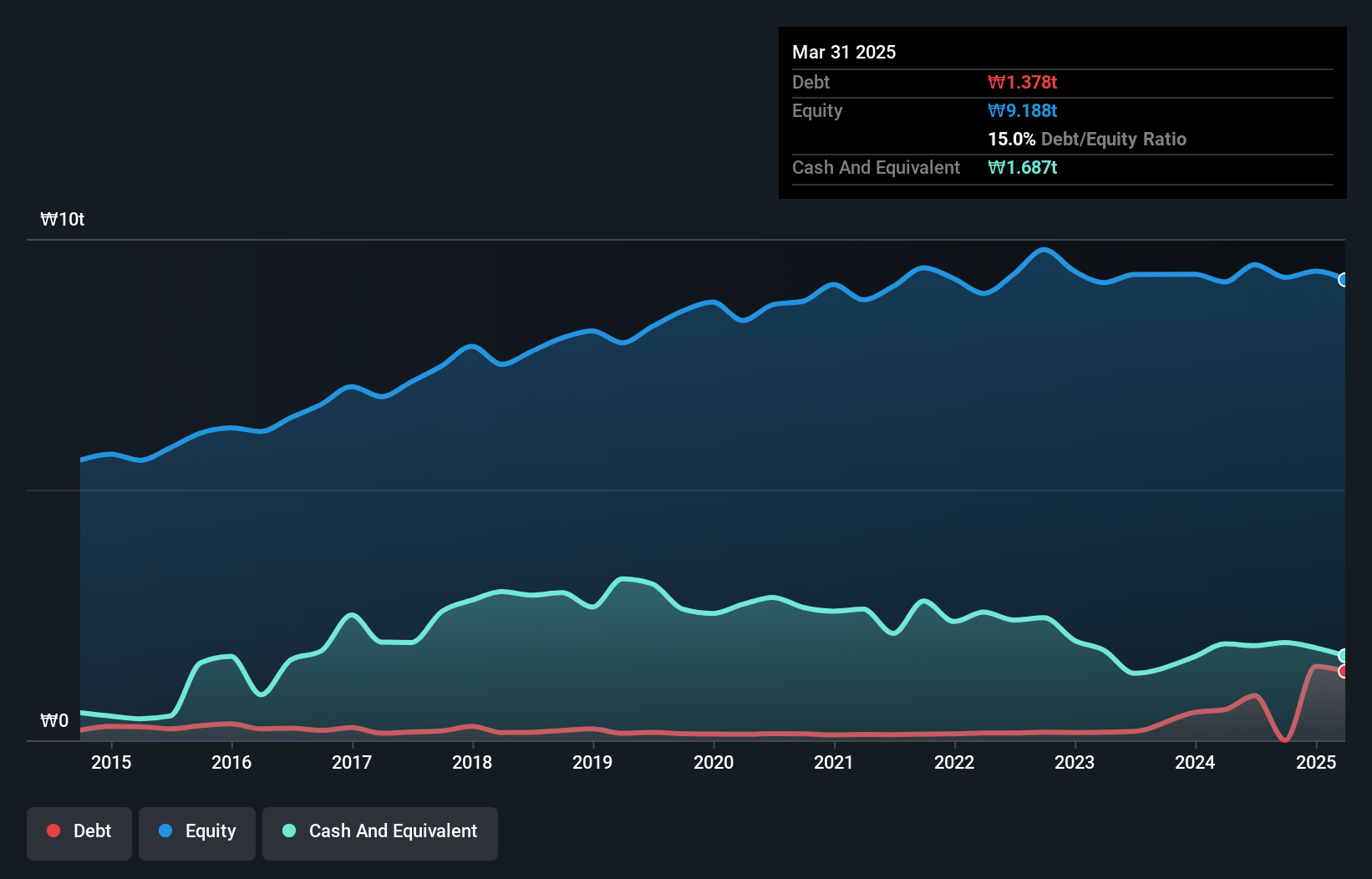
Legendary fund manager Li Lu (who Charlie Munger backed) once said, 'The biggest investment risk is not the volatility of prices, but whether you will suffer a permanent loss of capital.' So it might be obvious that you need to consider debt, when you think about how risky any given stock is, because too much debt can sink a company. As with many other companies KT&G Corporation (KRX:033780) makes use of debt. But the real question is whether this debt is making the company risky.
When Is Debt Dangerous?
Debt and other liabilities become risky for a business when it cannot easily fulfill those obligations, either with free cash flow or by raising capital at an attractive price. Ultimately, if the company can't fulfill its legal obligations to repay debt, shareholders could walk away with nothing. However, a more common (but still painful) scenario is that it has to raise new equity capital at a low price, thus permanently diluting shareholders. By replacing dilution, though, debt can be an extremely good tool for businesses that need capital to invest in growth at high rates of return. The first thing to do when considering how much debt a business uses is to look at its cash and debt together.
What Is KT&G's Net Debt?
The image below, which you can click on for greater detail, shows that at March 2025 KT&G had debt of ₩1.38t, up from ₩613.1b in one year. But on the other hand it also has ₩1.69t in cash, leading to a ₩309.7b net cash position.

How Healthy Is KT&G's Balance Sheet?
The latest balance sheet data shows that KT&G had liabilities of ₩3.42t due within a year, and liabilities of ₩1.46t falling due after that. On the other hand, it had cash of ₩1.69t and ₩1.93t worth of receivables due within a year. So its liabilities outweigh the sum of its cash and (near-term) receivables by ₩1.26t.
Given KT&G has a market capitalization of ₩13t, it's hard to believe these liabilities pose much threat. Having said that, it's clear that we should continue to monitor its balance sheet, lest it change for the worse. Despite its noteworthy liabilities, KT&G boasts net cash, so it's fair to say it does not have a heavy debt load!
View our latest analysis for KT&G
And we also note warmly that KT&G grew its EBIT by 14% last year, making its debt load easier to handle. There's no doubt that we learn most about debt from the balance sheet. But ultimately the future profitability of the business will decide if KT&G can strengthen its balance sheet over time. So if you're focused on the future you can check out this free report showing analyst profit forecasts.
Finally, a business needs free cash flow to pay off debt; accounting profits just don't cut it. While KT&G has net cash on its balance sheet, it's still worth taking a look at its ability to convert earnings before interest and tax (EBIT) to free cash flow, to help us understand how quickly it is building (or eroding) that cash balance. In the last three years, KT&G's free cash flow amounted to 31% of its EBIT, less than we'd expect. That weak cash conversion makes it more difficult to handle indebtedness.
Summing Up
We could understand if investors are concerned about KT&G's liabilities, but we can be reassured by the fact it has has net cash of ₩309.7b. On top of that, it increased its EBIT by 14% in the last twelve months. So we don't have any problem with KT&G's use of debt. When analysing debt levels, the balance sheet is the obvious place to start. However, not all investment risk resides within the balance sheet - far from it. For example, we've discovered 1 warning sign for KT&G that you should be aware of before investing here.
If you're interested in investing in businesses that can grow profits without the burden of debt, then check out this free list of growing businesses that have net cash on the balance sheet.
Valuation is complex, but we're here to simplify it.
Discover if KT&G might be undervalued or overvalued with our detailed analysis, featuring fair value estimates, potential risks, dividends, insider trades, and its financial condition.
Access Free AnalysisHave feedback on this article? Concerned about the content? Get in touch with us directly. Alternatively, email editorial-team (at) simplywallst.com.
This article by Simply Wall St is general in nature. We provide commentary based on historical data and analyst forecasts only using an unbiased methodology and our articles are not intended to be financial advice. It does not constitute a recommendation to buy or sell any stock, and does not take account of your objectives, or your financial situation. We aim to bring you long-term focused analysis driven by fundamental data. Note that our analysis may not factor in the latest price-sensitive company announcements or qualitative material. Simply Wall St has no position in any stocks mentioned.
About KOSE:A033780
KT&G
Engages in the production, distribution, and sale of tobacco products in South Korea, Europe, and internationally.
Excellent balance sheet with proven track record.
Similar Companies
Market Insights
Community Narratives



